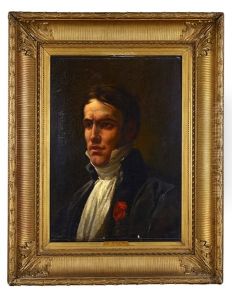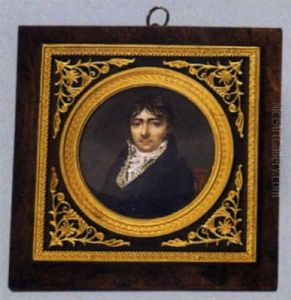Cesarine (nee Mirvault) Davin Paintings
Césarine Davin-Mirvault, born as Césarine Henriette Flore Davin, née Mirvault, was a French painter born on October 22, 1773, in Paris, France. She was known for her portrait paintings and was active during a transformative period in French history encompassing the late 18th and early 19th centuries, which included the French Revolution, the Napoleonic era, and the Restoration period.
Césarine's talent for art was recognized at an early age. She became a pupil of Jacques-Louis David, the preeminent French painter of the era, who was known for his history paintings and strong influence on the Neoclassical style. Under David's tutelage, Césarine honed her skills in portraiture and developed a refined technique. Her style was characterized by the clarity of form and the use of light and shadow to achieve a sense of depth and volume, which were hallmarks of Neoclassicism.
Despite the male-dominated art world of her time, Césarine Davin-Mirvault managed to gain recognition for her work. Her portraits were not only appreciated for their artistic merit but also for their ability to capture the personality and essence of her sitters. She exhibited at the Paris Salon, the official art exhibition of the Académie des Beaux-Arts in Paris, and her works were met with critical acclaim. One of her notable paintings, 'Portrait of a Young Woman', showcased her ability to render delicate features and fabric textures, exemplifying her meticulous attention to detail.
In 1793, Césarine married François Davin, a fellow artist and pupil of David. Her marriage to Davin did not hinder her artistic career, and she continued to create and exhibit her paintings. Throughout her life, Césarine Davin-Mirvault's contributions to French art were significant, and she remained an active member of the artistic community until her death.
Césarine Davin-Mirvault passed away on May 5, 1844, in Paris. Although not as widely remembered today as some of her contemporaries, her work still provides valuable insight into the artistic trends and social nuances of her time. Her portraits are held in various art collections and continue to be studied for their aesthetic qualities and historical importance.


